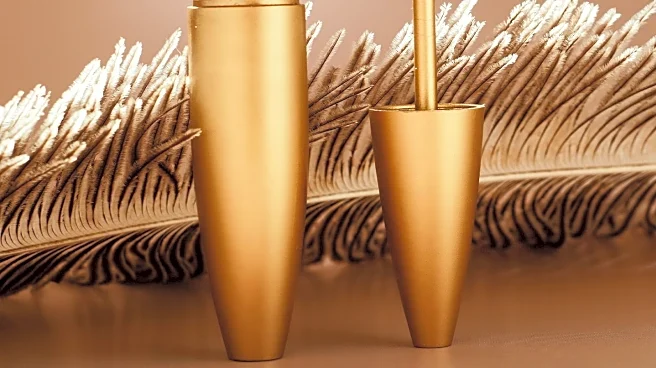What's Happening?
Brown mascara has transitioned from a niche product to a mainstream beauty staple, driven by Gen Z's preference for natural-looking makeup. Brands like Hourglass and Ilia have expanded their mascara lines to include brown shades, offering consumers a softer alternative to traditional black mascara. This shift is reflected in the choices of celebrities such as Sofia Richie and Hailey Bieber, who showcased brown mascara at the 2025 Met Gala. The trend is supported by extensive testing and reviews, highlighting the best formulas for volume and length without smudging or irritation.
Why It's Important?
The rise of brown mascara signifies a broader shift in beauty standards, emphasizing natural and understated looks over dramatic makeup. This trend aligns with Gen Z's aversion to heavy eyeliner and overdone eye makeup, influencing product development and marketing strategies within the beauty industry. Brands that adapt to these preferences may gain a competitive edge, appealing to a demographic that values authenticity and minimalism. The popularity of brown mascara also reflects changing consumer attitudes towards beauty, potentially impacting sales and product offerings in the cosmetics market.
What's Next?
As the demand for brown mascara continues to grow, more beauty brands are likely to expand their product lines to include a variety of brown shades and formulas. This could lead to increased innovation in mascara technology, focusing on enhancing natural lash appearance while maintaining comfort and wearability. Additionally, the trend may influence broader makeup styles, encouraging a shift towards more natural and subtle beauty looks across various platforms and events. Industry stakeholders will need to monitor consumer feedback and adapt their offerings to maintain relevance in a rapidly evolving market.
Beyond the Headlines
The embrace of brown mascara by the beauty industry highlights a cultural shift towards embracing individuality and natural beauty. This trend may encourage consumers to explore other makeup products that enhance rather than alter their natural features, fostering a more inclusive and diverse beauty landscape. Furthermore, the focus on natural looks could influence advertising and media representations of beauty, promoting a more realistic and attainable image for consumers.















